Names
- Kanni
- Kanni dog
- Paalakanni
- Pottukanni
- Karunkanni
- Pillaikanni
- Sevelaikanni
Conservation Status
ENDANGERED
Origin
India
Physical Traits
- Type: Sighthound, Scenthound
- Weight: Male 27 – 30 kg; Female 22 – 25 kg
- Height: Male 65 – 70 cm; Female 60 – 65 cm
- Coat: Dense-short coat
- Colour: Multiple, most common is black and tan. Breeders have different names for Kanni dog based on its colouration
- Litter Size: 4 – 8
- Life Span: 9 – 13 years
Kanni at a glance
The Greyhound of the South
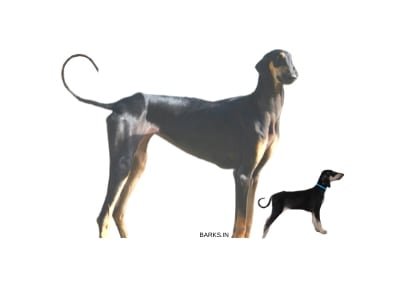
The Kanni dog is an endangered and ancient breed of dog from the state of Tamil Nadu. Kanni today is in Tirunelveli, Thoothukudi, and Virudhunagar districts. They are medium-sized sighthounds developed for hunting small game such as hare, wild boars, and Blackbuck. The native tract of the Kanni dog includes the Western Ghats. Kanni dogs were used for coursing small game which lived in the foothills of the Western Ghats.
Like all hounds, Kanni is aerodynamically built. They have a lean frame, strong long legs, broad chest, and a tucked abdomen. Their head is long with powerful jaws. Kanni’s tail is long and whip-like. The tail is curved towards the end. These dogs use their tails for balance during high-speed chases. These traits enable Kanni to reach speeds over 60 kmph. Kanni is also a good endurance runner being able to sustain high speed over long distances.
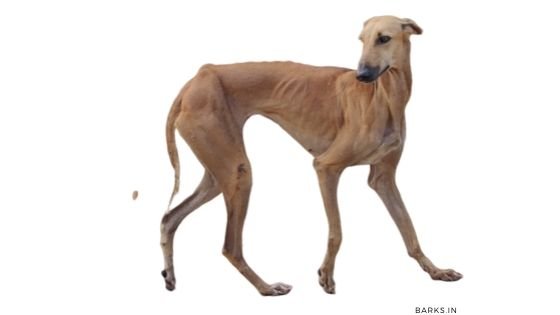
Today the Kanni dog is endangered and is on the verge of extinction. Accurate documented description about this breed does not exist. Kanni breeders are villagers who have limited access to the internet. Knowledge about this breed is passed from father to son through word of mouth. There is no documented lineage for these dogs. In addition to this, the breeders whom we interviewed have varying views about this dog.
This article is the first of its kind anywhere in the world to document these magnificent dogs before they faded away. We believe the first step towards the preservation of the Kanni is an accurate description. In this article, we present the following
- The history of the Kanni dog
- The purpose of this dog
- Kanni’s traits and temperament
- Kanni’s current status
- Steps that are needed to protect these dogs from extinction
History of Kanni Dog
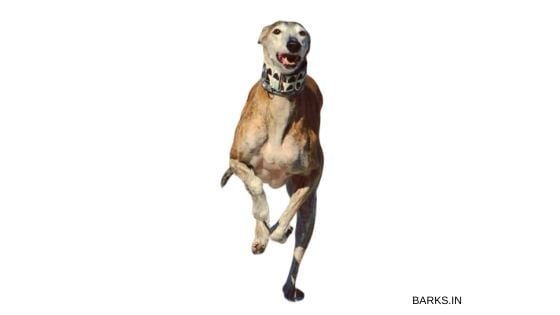
This dog is an ancient breed of dog. There are references to this dog in Tamil literature. “Vettai Nai” or hunting dog in ancient literature could possibly refer to this dog. Many experts believe that dogs like Kombai, Chippiparai, and Rajapalayam descended from a common ancestor. The native Pariah dog was likely cross-bred with a hound like the Pashmi Hound.
Ancient records in the Tamil language also describe a dog named Vengai Nai. This was a prized hunting dog. This dog was most likely an early ancestor of all the southern dogs. Vengai in the Tamil language refers to a Tiger. This is a possible reference to its fearless character.
The famous Maruthu Pandiyar brothers had these dogs, along with Kombai dogs. The word Kanni in Tamil means maiden. In villages along the this dog’s breeding tract an unusual custom of exchanging these dogs as wedding gifts between the bride and the groom is followed. This tradition continues to this day.
In his book, Indian dog breeds Mr. Theodore Baskaran, the wildlife conservationist describes the this dog as elegant and Cheetah like dogs. He writes the word Kanni means a maiden in the native Tamil language. This name is a possible reference to this dog being given as a wedding gift to groom by the bride’s father.
Historic information/records about this breed are hard to find. The knowledge about these dogs is passed down by word of mouth from father to son. There are no written descriptions or records of the dog’s lineage that are in existence today.
The true purpose of the Kanni Breed

The native tract of the this dog overlaps the Western Ghats. Wild animals from the Western Ghats often raided nearby plantations. This allowed the villagers to hunt these wild animals. this dog was developed as a sighthound for coursing game. For centuries these dogs were used by kings and commoners alike for hunting.
Hunts in olden days were a grand affair. People from nearby villages gathered with their Kanni and Chippiparai dogs along with hunters and their Rajapalayam dogs. Packs comprising of 3 or 4 dogs were then separated and taken into the forest while the hunters waited perched on vantage points. Hunters had the stronger Rajapalayam dog along with them for added protection. These dogs coursed game towards the hunters. These dogs that performed well during these hunts were highly prized. Rich rewards were offered to the dog handlers.
Today these dogs are used as multi-purpose dogs. These dogs have excellent vision and hearing, and they are very active and alter. Hence, this dog today is used as a guard dog. People also teach Kanni to jump fences that are over 7 feet high. This ‘sport’ is gaining popularity through social medai.
Kanni is an outdoor dog breed. They don’t make good apartment pets. Kanni dogs need to be outdoor for them to be happy. Kanni dogs that are kept in confined areas, without proper exercise become aggressive dogs. If you have a farmhouse, this is the dog for you. They are not well suited for city living.
The plight of Kanni today
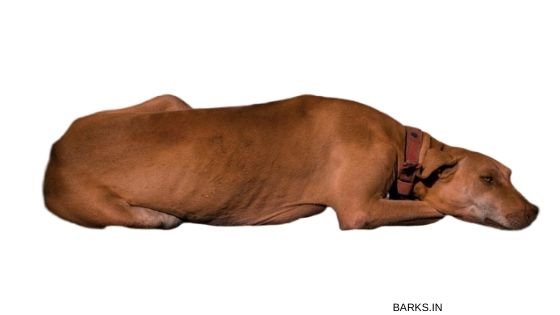
Kanni dogs of old were prized dogs that adorned the homes of the rich and famous. Today these dogs are a picture of neglect. Below are some of the major causes of their decline.
Ban on hunting
Today it is illegal to hunt with dogs anywhere in India. Before the ban, hunting with Kanni dogs was a sport and also a means of living for the dog handlers. Today dog handlers who relied on their dogs to provide for their living cannot afford these dogs. Kanni dogs were once a source of income now is yet another mouth to feed. This is the primary reason for the decline of the Kanni dog.
Space and exercise requirements
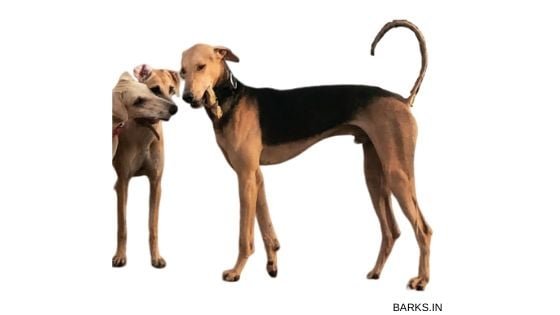
These dogs are outdoor dogs and cannot be kept in confined areas. They require space to be active. Hence, Kanni dogs are typically found only in rural areas. Very few people who live in a city can provide adequate living conditions for the Kanni dog.
Neglect
Neglect of native dogs is another issue that plagues all the native dog breeds. We believe the primary reason for the neglect is due to a lack of knowledge. There are no documented breed standards that exist today. Another issue is misinformation that is prevalent on the internet. Google search for Kanni results in pages written by people who have never seen or heard of a Kanni in their lifetime.
These dogs need our attention, more so an accurate description. The very least an average dog lover could do is to share knowledge. All of us use social media, bring the plight of these magnificent dogs to light.
The Kanni and its variants
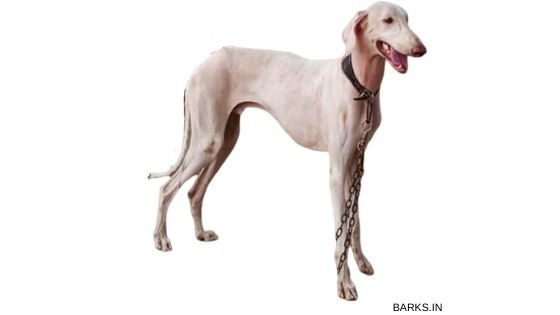
If you visit the Kanni breed’s native tract, you will be surprised to hear that there is not one Kanni dog, rather many. Also, people use different names and attribute different characteristics to this dog. We were surprised to hear from people who have bred this dog for generations that they are guard dogs. One breeder proudly proclaimed that his Pillai and Sevelai is the guard dog for their entire village.
In our view, the Kanni dog is one that occurs in multiple colors. The people who breed this dog use local names to distinguish their dog from the rest. Everyone whom we interviewed agrees that Kanni is the best game dog. People who want to differentiate their dogs from the rest look for additional qualities like guarding, obedience, etc.
Kanni versus Chippiparai

Another aspect of the Kanni is its similarity with another dog, the Chippiparai dog. To the untrained eye, both Chippiparai and Kanni look the same. There are only minor phenotypical differences between both dogs. Yet people in its native tract distinguish and consider them as separate dogs.
Most people agree that the difference between these two dogs is only in color and size. Chippipari dogs are silvery brown, whereas Kanni dogs are seen in multiple colors. The only way to determine if these dogs are two distinct dogs is to carry out genetic research. To this day, genetic studies on native dogs are limited.
We base our opinion upon the people who have bred these dogs for generations. Most experts believe these to be distinct dogs.
Top speed of Kanni dog

Kanni are one of the fastest dogs in the world. Kanni is known to run 60 kmph. Many breeders say with proper training, they can reach speeds of up to 65 kmph. Some breeders claim that their dogs can run up to 70 kmph. These are most likely exaggerated claims.
Physical traits of the Kanni dog

The original Kanni is a sighthound that is long, slender, and powerful. The dog should be elegant and graceful. They are not clumsy.
Head of the Kanni
The head is straight with a long muzzle. The base of the skull is extensive, with ears that are low and hanging. The eyes are oval, large, and should have an alert expression.
Body of the Kanni
Kanni’s is symmetrical and in proper proportions. The dog should be square, never too long or too tall. The critical point about these dogs is proportions. The whole body, its head, neck, and others should blend nicely. The chest of this dog is broad, like that of a Cheetah with visible ribs. The chest curves into a tucked abdomen, giving this dog the distinct hound look. The tail is bony with a slight bend at the end.
Legs of the Kanni
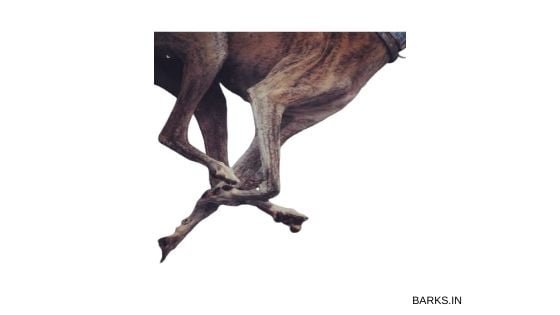
Legs of this dog should long, bony, and sturdy. The front legs are parallel to each other and should blend into their shoulders. The thigh should have well-defined muscles that propel the dog forward.
Gait of the Kanni

The Kanni should be graceful in its stride and not clumsy. When running, this dog keeps low, with front legs crossing with its rear.
Temperament
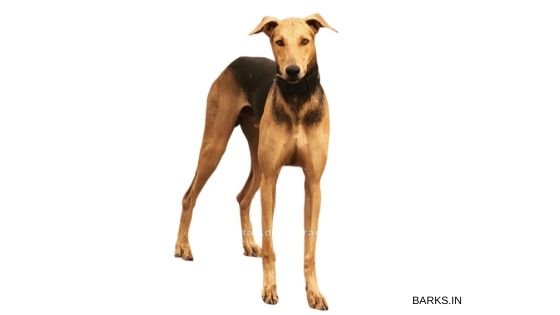
Kanni dogs are inquisitive dogs. They are indifferent to strangers but are affectionate towards their own family. Kanni is active and always ready for work. They enjoy playing fetch and have a limitless amount of energy.
Kanni also has a reputation for being very courageous. This makes them excellent guard dogs. They are wise, being able to judge and make intelligent choices in the absence of their master. Kanni is a quiet dog barking only when needed.
If left alone they can get bored and can become destructive by chewing shoes and furniture. Kanni dogs that are kept in isolation and away from human contact can become very aggressive and unmanageable. We don’t recommend Kanni as your first pet as they require specialized care that a first-time dog owner cannot provide.
Care
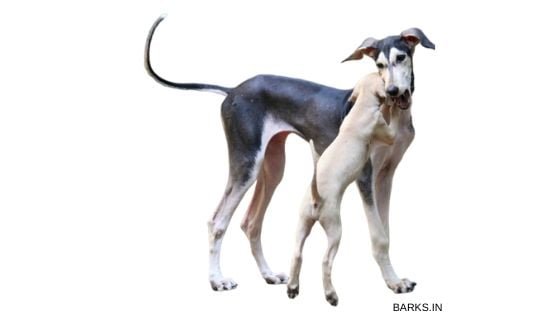
Kanni is well adapted to hot and humid conditions. Their short coats don’t provide any insulation during clod winter. Kanni dogs need to be indoors during cold winter days. They are very healthy. Kanni requires minimal but specialized care. Kanni’s pups grow fast. Their diet should contain high protein and calcium content. The parvo vaccine and anti-rabies vaccines are a must for puppies.
Grooming
Kanni’s short coats require little grooming. Applying coconut oil on their skin once a week ensures excellent coat condition. Shedding is known but unnoticeable. Like all native dogs, no special care is required to maintain their coats in top condition.
Kanni should not be bathed more than twice a month. Frequent bathing can remove the natural protective oil secreted by their skin. Removal of this oil cause flaky and dry skin. Their coat also loses its natural shine.
Exercise Requirements

Kanni requires sessions of intense exercises. They are prone to boredom when left alone. Space and exercise requirements for hounds and game dogs are exponentially higher than the rest of the dogs. Hence these dogs are not apartment-friendly or can live in small confined spaces. They require space to run and play.
The breeders say Kanni dogs prefer to be in packs. Hence dog handlers typically own 3 or 4 dogs. This not only helps their social skills but also ensures that they playmates. While they are puppies, these dogs are taken to the rice fields where they are taught to hunt field mice. Through these hunts, these dogs learn to use their sight, hearing, and speed.
Recommended reading: Helping hunting dogs enjoy life without hunting, 13 training games for active dogs
Trainability

Like all hounds, they are intelligent and eager to learn and please their master. Kanni dogs are trained by using whistles and clicks. This is needed to control the dog during hunts. Kanni dogs are also stubborn, however, with time and patience, these dogs can be trained.
Due to their fine-tuned senses, it is difficult to get them to concentrate. Hence training routines should be short with frequent intervals. Positive reinforcement training works best for these dogs. Harnessing their prey drive helps them to learn much faster. This, in our experience, works the best and builds a solid bond between the dog and its master.
Recommended Reading: Understanding dog’s body language
Nutritional needs of Kanni dog
Kanni dogs need high energy food to match their active lifestyle. They are fed soup (chicken/goat) along with homemade food. They are fed two meals per day. Breeders also recommend food that has high calcium and protein content. Ragi/finger-millet is preferred over rice.
Recommended Reading: Which human foods are good and which ones to avoid
Top known ailments (health issues)
As a result of sound breeding practice, the Kanni dog is a very healthy dog with very few ailments.
- Cuts and bruises: This isn’t a disease but something worth mentioning here. They are fast and active dogs. Hence, proper care is needed for treating bruises or cuts
- Parvo viral diarrhea: Deadly disease affecting puppies younger than one year often resulting in death.
- Dermatitis: Dermatitis causes the dog to lose its hair. As a result, it causes skin irritation and itching.
Natural remedies for Kanni
The Kanni dog breeders rely only on natural medicine. Below are commonly used.
- Dermatitis: Crushed Aloe Vera mixed with coconut oil is applied over the dog’s body.
- Deworming: Young Neem leaves are crushed and then ground into a paste. This paste is rolled into pill-sized balls and dried in the sun. One pill for 5 kg of dog’s weight is fed to the dogs.
- Cuts: Turmeric is mixed with virgin coconut oil to form a thick paste. This paste is then applied to the wound. Turmeric has antiseptic and antibiotic properties that heal. Coconut oil seals the wound.
Recommended Reading: Natural remedies for dogs
What is the Kanni’s price?
| Puppy cost | Avg. Food cost /month | The total cost/year |
| ₹6,000 to ₹13,000 | ₹3,500 to ₹5,000 | ₹5,000 to ₹15,000 |
These dogs traditionally haven’t been sold, they are typically given out as gifts. This practice of not selling but giving exists even today. Getting a good quality pup is difficult, breeders seldom sell their dogs to outsiders. This practice of not selling to the outsiders has put this dog under threat of inbreeding. Not many people own Kanni dogs these days, the gene pool is at its lowest.
Recommended Reading: Dog prices in India
When to choose a Kanni dog?
Today these dogs fulfill multiple roles. People with large properties and plantations use packs of 3 or 4 these dogs as guard dogs. Police and armed forces use them as sniffer dogs. Wildlife poachers use them for hunting. Remember to get your Kanni insured. Pet insurance will help you in the event of an emergency.
Interesting facts about the Kanni
- Kanni in Tamil means maiden, these dogs are given to the groom by the father of the bride as a wedding gift
- This dog is also referred to as Greyhound of the south for their speed
- 60 kmph is their average top speed. They are also good endurance runners, being able to sustain high speed over distances.
- Introduction non-native breeds of dogs, improper management are pushing this dog towards extinction
- Kennel Club has introduced specialty native breed dog shows to promote native dogs
Frequently asked questions
How to identify the original Kanni?
Kanni dogs are medium-sized sighthounds. They are seen in various colors. The most preferred color is back and tan. They have a tan spot above their eyes. When choosing a puppy look for the following
- The puppy must be active, alert, and healthy. Don’t select nervous puppies.
- The puppy’s gait must be elegant and not clumsy.
- The puppy should have a rectangular body.
- The preferred color is black and tan.
- The puppy’s coat must be smooth with dark skin.
- Look for hound traits. Learn everything about Kanni’s in this post.
- Never buy your Kanni from a pet store or a puppy mill.
Where to buy a Kanni dog?
The best place to buy a Kanni is from one of Tirunelveli, Thoothukudi, and Virdudhunagar districts. Kanni dogs are rare, and your search will take time. Visit or call the Kennel Club’s office in your city, they will be able to help give you contacts of breeders in your area.
How can I save the Kanni dog?
We are glad you asked! Kanni dogs are unknown despite being an ancient breed. The knowledge about this breed is slowly eroding with time. Once a prized possession, now a sad picture of neglect.
- You can help by increasing awareness of this dog by sharing this article with your friends on social media.
- If you are an expert and have first-hand information about these dogs, we encourage you to contact us. You can use this as a forum to share your knowledge with the rest of the world.
- If you are an authority on Kanni dogs, you can contribute by sharing your knowledge here.
- If you are a breeder and have puppies for sale, please post your contact information in the comments.
Conclusion

In conclusion, like all native dogs, the Kanni is on the verge of extinction. A dog that can run 60 to 65 kmph and is very healthy has given its way to non-native dogs. Kanni can be brought back to life with your contribution. The least that you could do is to share this article in your social media circle. The most that you do is to choose a native dog as your next companion and friend.



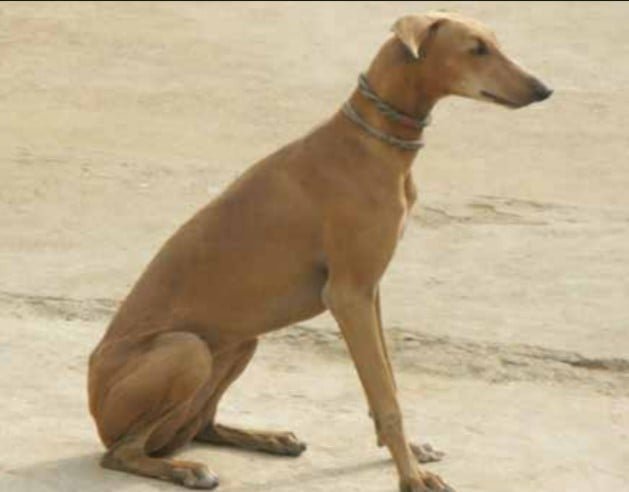
Really well written. Comprehensive.